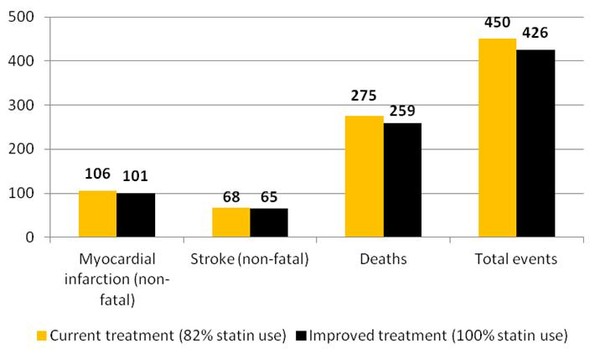A recent study concluded that closing the statin ‘treatment gap’ using generics was cost-effective in the secondary prevention of coronary artery disease (CAD) in Australia [1].
Increased use of generic statins proves cost effective in Australia
Generics/Research
|
Posted 25/05/2012
 0
Post your comment
0
Post your comment

In Australia, statins–HMG-CoA reductase inhibitors–are recommended for patients with, or at high risk, of cardiovascular disease.
Using data from the population-based Australian REduction of Atherothrombosis for Continued Health (REACH) Registry, mathematic modelling was used to determine the cost-effectiveness, in terms of incremental cost-effectiveness ratio [2] per life-year gained, and of increasing generic statin use among Australian patients with existing CAD compared with current practice.
The model compared the current statin coverage (82%) in the secondary prevention of CAD (current group) with a hypothetical situation of 100% coverage (improved group). The 18% gap was filled with use of generic statins. A total of 2,058 subjects aged ≥ 45 years with established CAD were included in the analysis, of these 1,687 (82%) were receiving statins.
In the current group, it was estimated that there would be 106 non-fatal myocardial infarctions, 68 non-fatal strokes and 275 deaths over five years. This was compared to 101, 65 and 259, respectively, in the improved group, see Figure 1. This equated to numbers needed to treat of 426, 639 and 127 respectively. Over the five years, there would be 0.018 life-years gained at a net cost of AUS$546 per person, equating to an incremental cost-effectiveness ratio of AUS$29,717 per life-year gained.
Figure 1: Events due to coronary artery disease in CAD patients [1]
The authors conclude that increasing the use of generic statins among subjects with existing CAD would be cost-effective when the statins cost up to AUS$600 per person per year, representing a cost-effective means of secondary prevention of CAD.
Related article
Brand-name statins costing healthcare system US$6.7 billions
References
1. Ademi Z, Reid CM, Hollingsworth B, Stoelwinder J, Steg PG, Bhatt DL, et al. Cost-effectiveness of optimizing use of statins in Australia: using outpatient data from the REACH Registry. Clin Ther. 2011;33(10):1456-65.
2. GaBI Online - Generics and Biosimilars Initiative. What is the incremental cost-effectiveness ratio (ICER) [www.gabionline.net]. Mol, Belgium: Pro Pharma Communications International; [cited 2012 May 25]. Available from: www.gabionline.net/Generics/General/What-is-the-incremental-cost-effectiveness-ratio-ICER
Most viewed articles
The best selling biotechnology drugs of 2008: the next biosimilars targets
Global biosimilars guideline development – EGA’s perspective
Related content
Generic medications in the Lebanese community: understanding and public perception
Community pharmacists’ understanding of generic and biosimilar drugs: Lebanon case study
Reshaping landscape of Japanese generics market – uncertain future of universal health insurance
Impact of e-bidding procurement on generic omeprazole injection prices in Thailand
Generic medications in the Lebanese community: understanding and public perception

Generics/Research Posted 23/01/2024
Community pharmacists’ understanding of generic and biosimilar drugs: Lebanon case study

Generics/Research Posted 08/09/2023
Reshaping landscape of Japanese generics market – uncertain future of universal health insurance

Generics/Research Posted 11/08/2023
Impact of e-bidding procurement on generic omeprazole injection prices in Thailand

Generics/Research Posted 20/06/2023
The best selling biotechnology drugs of 2008: the next biosimilars targets






Post your comment